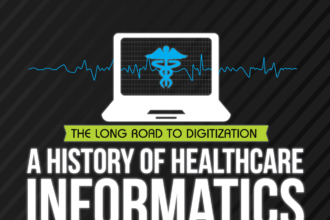 All covered entities need to meet the latest version of HIPAA, 5010, by January 1, 2012. The latest set of standards aim to upgrade the regulation of all electronic transmissions of healthcare transactions including eligibility, claim status, referrals, claims and remittances.
All covered entities need to meet the latest version of HIPAA, 5010, by January 1, 2012. The latest set of standards aim to upgrade the regulation of all electronic transmissions of healthcare transactions including eligibility, claim status, referrals, claims and remittances.
 All covered entities need to meet the latest version of HIPAA, 5010, by January 1, 2012. The latest set of standards aim to upgrade the regulation of all electronic transmissions of healthcare transactions including eligibility, claim status, referrals, claims and remittances.
All covered entities need to meet the latest version of HIPAA, 5010, by January 1, 2012. The latest set of standards aim to upgrade the regulation of all electronic transmissions of healthcare transactions including eligibility, claim status, referrals, claims and remittances.
Why is this deadline so important? Transactions not using HIPAA 5010 will be rejected, resulting in rejected claims and cash flow interruptions.
HIPAA 5010 history: The regulation was created in 2009 – level I compliance was effective by December 2010, and level II compliance was effective by December 2011.
- Level I compliance: “that a covered entity can demonstrably create and receive compliant transactions, resulting from the compliance of all design/build activities and internal testing.”
- Level II compliance: “that a covered entity has completed end-to-end testing with each of its trading partners, and is able to operate in production mode with the new versions of the standards.”
While the HHS allows the use of both the existing standards (2010A1 and 5.1) and the new standards, (5010 and D.0) for the time being, that fact will change come next year. The final deadline for all covered entities to fully comply with the latest HIPAA standard 5010 is January 1, 2012.
Who is required to upgrade? Physicians, hospitals, payers, clearinghouses, pharmacies and dentists are included. Software vendors also need to upgrade their products to support HIPAA 5010. The new HIPAA 5010 version strives to clarify usage to remove ambiguity, create consistency across transactions, support NPI regulation and remove data content no longer used.
To make it easier for organizations and individuals to conduct a gap analysis, the CMS (Centers for Medicare and Medicaid Services) has documents available for download comparing old HIPAA standards to new HIPAA standards, side-by-side, including professional claims, institutional claims, remittance, claim status, eligibility and more. These can be found in the Electronic Billing & EDI Transactions > 5010 D.0 HIPAA Standards.
Who’s actually prepared for the 5010 switch? While the newest version of HIPAA has been around for a while, not everyone appears to be ready for the full switch. The Medical Group Management Associate (MGMA) announced a request for a HIPAA 5010 contingency plan from the Department of Health and Human Services (HHS), calling on the department to not penalize health plans that only meet the most critical data content requirements, and not the full list of requirements.
This request comes on the coattails of a MGMA study, as reported by HealthcareITNews.com, that reveals only 4.5 percent of respondents rate their 5010 implementation as fully complete, while 50 percent rate it as between 26 and 99 percent complete, and 40 percent rate it as less than 25 percent complete.
What steps should you take toward HIPAA 5010 implementation? The American Medical Association (AMA) provides a preparatory fact sheet on planning and tactically implementing HIPAA 5010 in time for the January 1, 2012 deadline:
- Impact Analysis – Conduct an internal impact analysis to determine how much of a change the switch to 5010 will have on your current business practices and systems.
- Contact your Vendors, Payers, Billing Service and Clearinghouse – Contact vendors for specific details regarding system upgrades, and ask them about when they expect their upgrades to be completed, and when they’ll be able to accept 5010 transactions.
- Installation of Vendor Upgrades – Schedule the system upgrades according to your vendor’s readiness, and ensure the installation of upgrades is complete.
- Internal Testing and Staff Training – Once upgrades are completed, conduct internal testing of your systems to ensure you can generate and handle the 5010 transactions. Leave a margin of time for issue resolution and staff training on the new system.
- External Testing with Clearinghouse, Billing Service and Payers – Contact your vendors to conduct external testing with them to ensure you can send and receive transactions properly.
- Make the Switch to 5010 – After completing external testing, you may switch to using only 5010 transactions.
For more HIPAA guidance, check out Tips for Passing a HIPAA Audit or sign up for our ongoing, free webinar series, A to Z to Achieving HIPAA Compliance. Or if you have other questions, check out our HIPAA FAQ.
Sources: CMS 5010 D.0 Electronic Billing & EDI Transaction HIPAA 5010 Implementation HIPAA 5010 Contingency Plan Needed, Says MGMA Preparing for the Next Version of HIPAA Standards: January 1, 2012 Compliance Date (pdf)








_8-250x220.jpg)